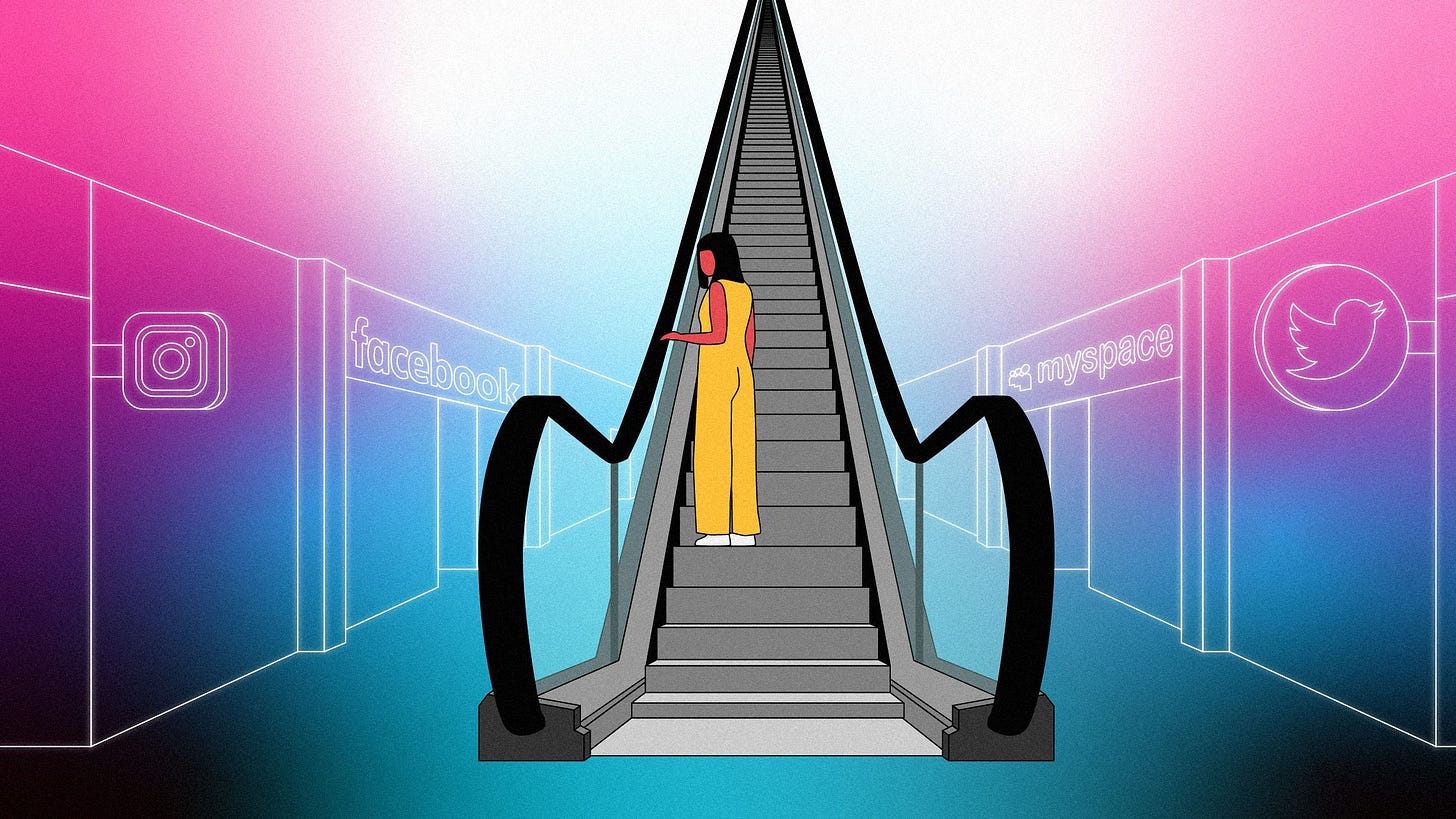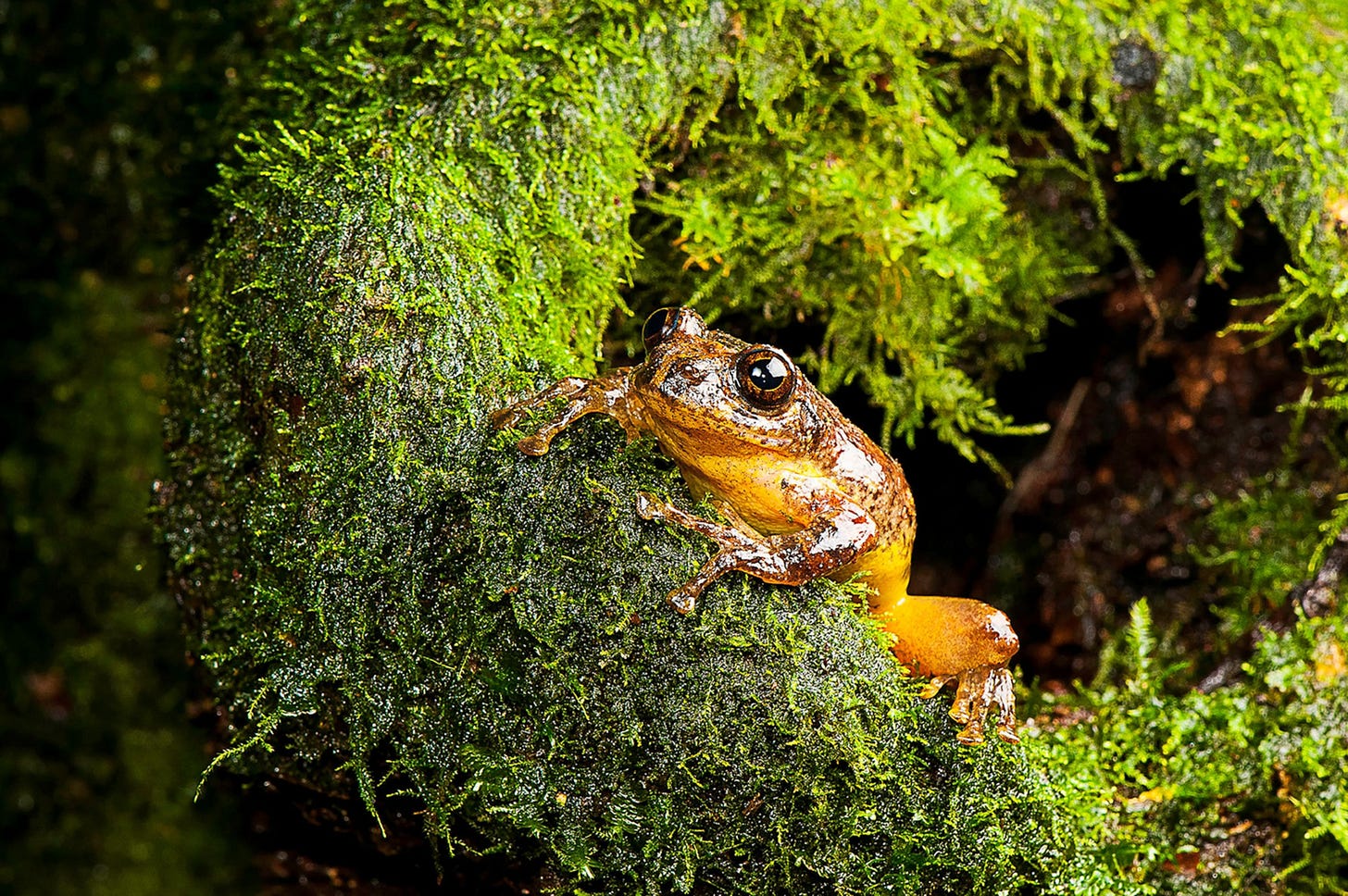Issue 2: Women of Science Nov '23
News, research, reviews, recommendations & an essay on "digital loneliness"
Welcome back to Women of Science, featuring all the best happenings re: women of science every week 🧬
🔬 What to expect?
All subscribers receive the free edition covering weekly highlights in media, awards and discovery as well as things to read, see and watch re: women in science. Drops every Tuesday. Tell your friends:
Thank you for joining. Enjoy the read.
A quick run-down of this issue:
Abstract & Intro: News and updates on all things women of science
Materials, Methods, Discussion: An essay on "digital loneliness"
Conclusions & Further Reading: Reccos, reads & links this week Abstract & Intro
Headlines, news & media snippets re: women of science this week
Medicine: Nearly 300,000 women to be offered drug which can cut risk of breast cancer in half
Almost 300,000 women in the UK are to be offered a drug - anastrazole - to reduce their risk of developing breast cancer, the NHS has announced in the past week. Charlotte Lytton also shared her experience of taking the drug in this week’s UK The Times.
Medicine: Contraceptive Pill Impairs Women's Brains in Way Scientists Did Not Realise
New research by scientists at the University of Quebec in Montreal has found that these hormones - lest we forget, prescribed to millions of women worldwide - may have an impact on how fear is processed in the brain.
Medicine: Study reveals new test can improve triage of abnormal uterine bleeding
Published in The Lancet Oncology this week, the WID-qEC test shows improved performance compared with a combination of imaging index tests, and could help to reduce the number of women requiring histology to identify potential cancers.
Computing: Professor Jane Hillston & Demis Hassabis awarded BCS Lovelace Medal
Jane Hillston shares the 2023 Lovelace Medal in recognition of her work developing new approaches to modelling both artificial and natural systems.
Economics: Rewarding women more like men could reduce STEM wage gap
Continuing last week’s issue headlines and essay on the gender pay gap, new research from Cornell University has shown that treating women more like men, especially on pay day, is more important than representation alone.
& in other brief news:
A study of Black women teaching science has found a formula for incorporating anti-racist practices
The Founder of Tinder rival dating app Bumble has stepped down as CEO
Harvard University’s own Professor Jennifer Hoffman has shattered the women’s transcontinental running record
Materials, Methods, Discussion
A brief essay on digital loneliness
Is “digital loneliness” a thing? An article published this past week in Wired has commented on the demising golden age of social media connectivity. While not a revolutionary commentary, it is a phenomenon now thought to disproportionately affect the generation that has grown up not knowing a world without it - Gen Z: An increasing correlation existing between social media usage and feelings of loneliness, exacerbated by the seismic shift in societal behaviours and workforce practices brought on - and which remain a stark legacy of - the covid-19 pandemic.
But feeling lonely in the digital world per se - rather than seeking comfort in the digital world in the absence of real-world connections - is something less reported on, but nonetheless pertinent. Flicking repeatedly through TikTok, Instagram and X/Twitter in the hope of triggering a dopaminergic rush that is increasingly facilitated by online interactions has led many users to a false virtual promised land. Indeed, one recent study found that those who used social media primarily for maintaining their relationships felt lonelier than those who utilised it for other reasons, and while social media at a surface level seeks to present an easy method of facilitating human contact, it often fails to deliver what it says on the tin at a deeper, more personal level. Hence, digital loneliness.
The Guardian on the one hand has previously cited that our collective attention has not so much been sought but stolen by the perpetrators of these dopamine hits - the app operators and software developing companies themselves know just which buttons (literally) to press to keep users seeking their fix.
A leading voice on studying the effects of disrupted attention and author of Losing Our Minds, Professor Barbara Demeneix, cites some of the research findings linked to the impact of social isolation: From college students’ attention span on a singular task being less than a minute, to that of office workers’ being under five minutes. The knock-on effects for not just the individual but society at large are profound, creating a cyclical public health crisis of increased sick days and greater pressure on healthcare systems. A boom in previously uncommon mental health disorders including body dysmorphia as well as anxiety and depression have also been attributed to social media dependency and real-world isolation.
Perhaps unsurprisingly, however, is the notion that while men benefit more from social media on an - indeed - social level than women, women also have better reported “meaning in life” than men - attributed to factors such as the former’s ability to create more intimate, robust and numerous social relationships, often earlier in life and which may be strengthened or at the very least maintained by common experiences such as motherhood.
How to resolve, or at least minimise, this? Solutions proposed range from an “attention movement” to actively reclaim previous in-person social normalcies to digital detoxing and even nature therapy. Mindfulness training has demonstrated effectiveness in a randomised controlled trial. The TLDR is essentially, to fight back: As author Johann Hari of Stolen Focus: Why You Can’t Pay Attention claims, “The first step it requires is a shift in our consciousness”. In the land of the smartphone, it is not the user that is king - but the app operator lurking (proverbially) behind the screen.
Conclusions & Further Reading
More links & signposts for you to enjoy this week…
Publication of the week:
Drop dead! Female mate avoidance in an explosively breeding frog
Female European common frogs have been found to have at least three moves that give them a chance of escaping overbearing male grasps, according to evolutionary behavioral ecologist Carolin Dittrich and curator of herpetology Mark-Oliver Rödel of the Berlin Natural History Museum in the journal Royal Society Open Science.
As male and female frog reproductive strategies may differ, this can lead to sexual conflict in the species, and may even negatively affect female survival and thus lead to reproductive failure for both individuals. Female “avoidance” behaviours here range from ‘rotation’ and ‘release call(s)’ to tonic immobility (essentially, faking their own death): The latter behaviour as a tactic to avoid mating or male harassment has only been observed in a handful of species and only in one other amphibian.
Why is this useful? Disproportionate female : male survival has implications for species survival and knock-on effects for their habitats. It also demonstrates previously unknown (or unreported) behavioural differences in reptile sexual activity, behaviour and aggression. And also that females in explosive breeding frogs can push back against unwanted male attention and be a little badass themselves, at least more so than previously thought (🎉).
Interview of the week:
‘We need more women,’ says only female winner of Millennium engineering prize
Women form just 16% of the nominees for next year’s award, but Nobel laureate Prof Frances Arnold says gender balance will come through girls working in science from a young age: As the only woman winner in the history of the Millennium Technology Prize – the Nobel equivalent for engineers – she has cited that less than 20% of nominees for next year’s award are female.
Read more on her work and thoughts on finding a gender-balance engineering solution at the link above ☝️.
Books & review articles:
👩🏼🔬 Jessica Wade’s 1600 Wikipedia tributes to overlooked women scientists: The Imperial-based physicist has written the entries (and counting) on women in science for the online encyclopaedia, and we commend the efforts wholeheartedly (her own entry is here!)
📱Snapchat’s Ruth Arber on Creating Opportunities for Women in Tech: Snap Inc.’s Head of Fashion, Retail & Travel takes to the Female Leaders panel to discuss the importance of getting more women into engineering and tech roles, and how Snap is working to make this possible.
👩💻 Getting more women into STEM jobs isn’t enough to fix the wage gap, top sociologists say. It requires ‘treating women more like men’: More on the gender pay gap, particularly in tech - this article in Fortune sheds light on potential solutions to a global problem.
💰10x more money goes to VC funds owned by all-male vs all-female teams: This (depressing) analysis by Sifted summarises findings from a new report showing that all-male-owned VC funds raised ~10x more capital than all-female-owned funds in fundraising carried out between 2017-2023. (The Times also highlighted the same “gender washing” for those who aren’t paywalled).
Podcast of the week:
The Academinist: The podcast about equality and feminism in STEM. Join Rebecca & Jodi - two neuroscientists based in London - as they discuss with guests how inequality affects womxn and minorities in STEM*, and ponder what we can all do to fix this as feminists in science.
Opportunity of the week:
Female Founder Accelerator: Powered by Barclays Eagle Labs and funded by UK Government has been designed to support 100 innovative, female-led technology businesses. The programme will also include opportunities for one-to-one mentoring, exclusive accountability groups, a Barclays champion, in-person community networking, and a showcase event.
📍 Applications close: 24 November 2023
Out and about this week:
London’s very own Vagina Museum recently held its reopening in east London, having launched as a series of pop-ups across the UK back in 2017. As the world’s first bricks-and-mortar museum dedicated to vaginas, vulvas and the gynaecological anatomy, its permanent home is now in Bethnal Green, and open to the public from Weds-Sunday.
The museum’s current exhibition on endometriosis is run in collaboration with Oxford Endocare and the University of Oxford, and is a particular must-see for visitors; highlighting the science, symptoms, myths and reality of endometriosis for often-neglected sufferers. Well worth a visit.
📍 Arches 275-276, Poyser Street, London E2 9RF
That’s all for this week!
Thank you for reading: The WoS mission is to support, share and promote the innovative and groundbreaking work that has been and continues to be done by women across all scientific disciplines, and to empower and inspire the next generation of female leaders in the field.
If you liked it, here’s another reminder to share us with your friends, network, neighbours, coffee baristas ☕ etc.:
Over the coming months, the WoS community will also be adding to its repertoire of channels for sharing content, so watch this space!













